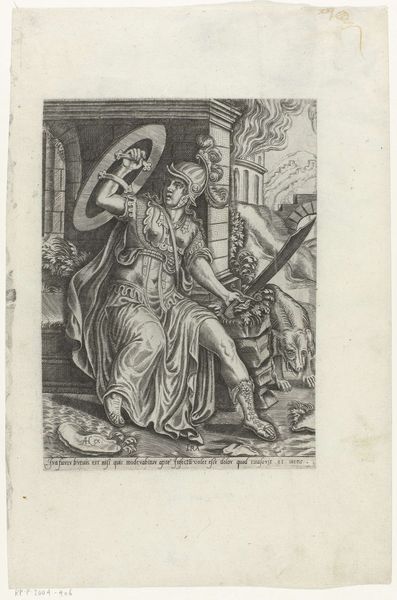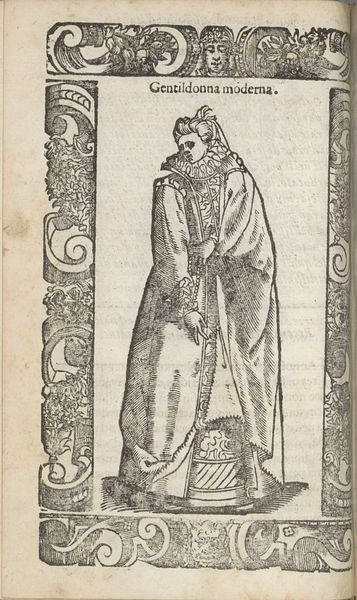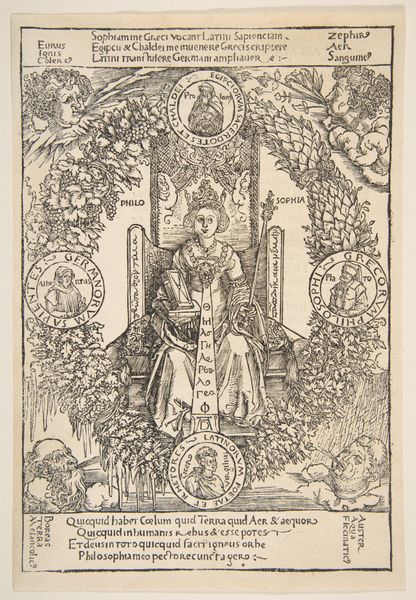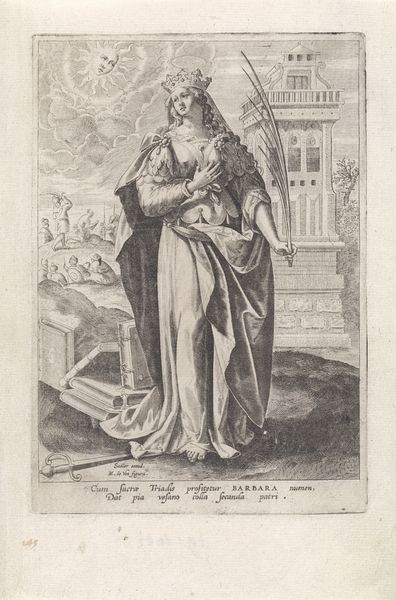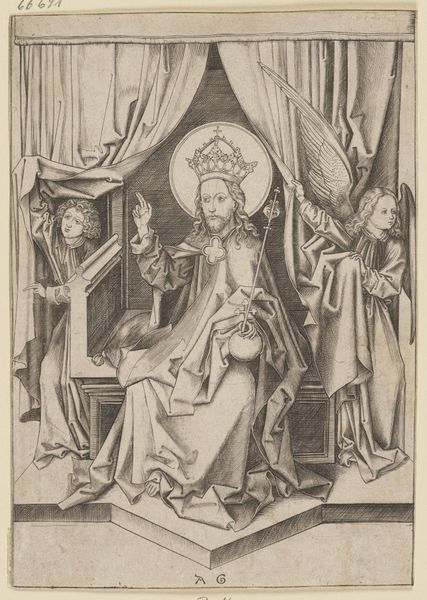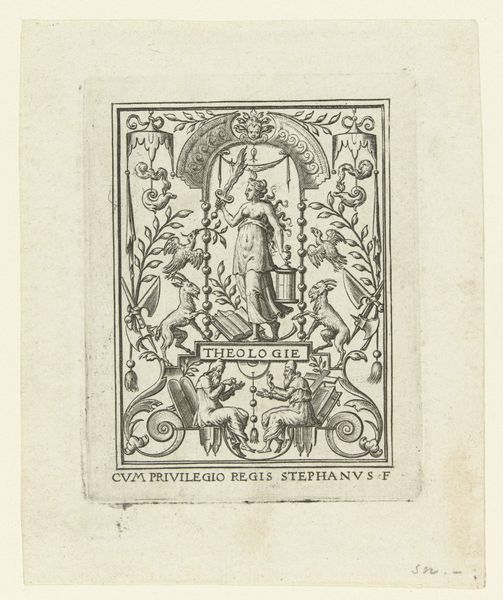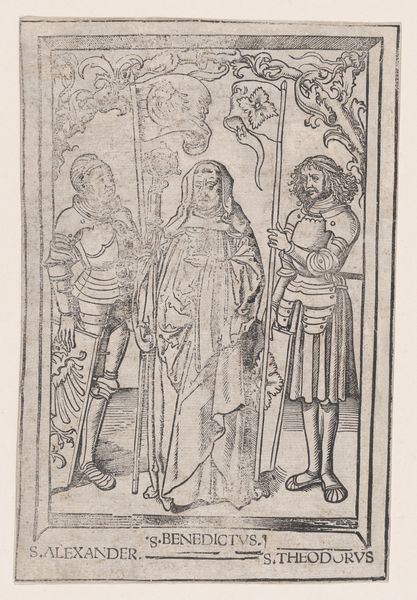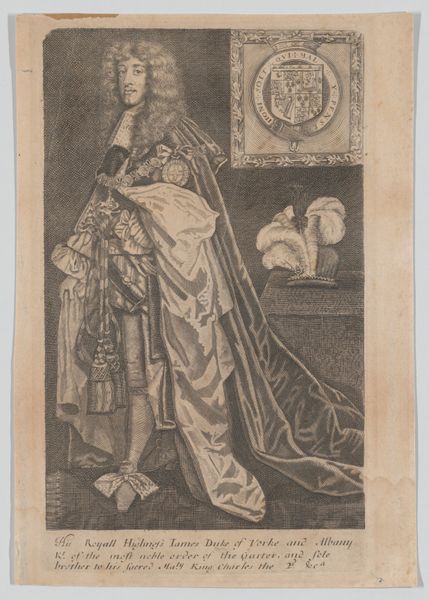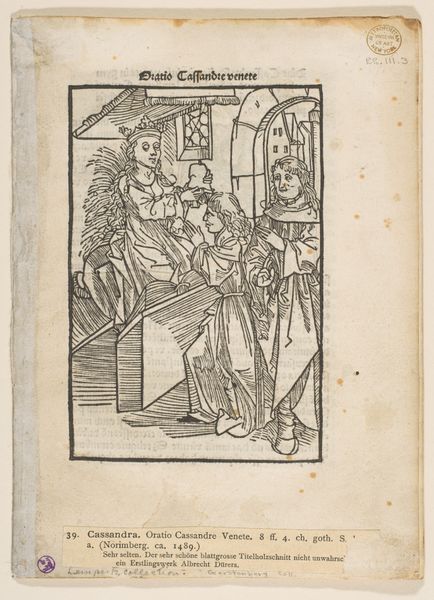
Rosvitha Presenting the Comedies to the Emperor Otto I. illustration from the Opera Hrosvita, 1501 1501
0:00
0:00
drawing, print, ink, woodcut
#
drawing
#
ink drawing
#
medieval
#
narrative-art
#
pen drawing
# print
#
figuration
#
ink
#
woodcut
#
line
#
history-painting
#
northern-renaissance
Dimensions: sheet: 10 3/4 x 7 13/16 in. (27.3 x 19.8 cm) image: 8 1/2 x 5 3/4 in. (21.6 x 14.6 cm)
Copyright: Public Domain
Albrecht Dürer made this illustration from the Opera Hrosvita around 1501, using a woodcut technique. The stark contrast between the cut and uncut areas of the block creates the image. It’s a relief printing process: the artist carves away the wood, leaving the design standing in relief. Look closely, and you'll see the marks of the cutting tools, especially in the fine details of the Emperor’s robes and Rosvitha’s delicate presentation. This wasn't just about artistic expression; it was a commercial venture. Dürer, a master printmaker, capitalized on the demand for images in a rapidly expanding print market. The very act of producing multiple impressions democratized art, making it accessible beyond the elite circles. The labor-intensive process, from carving the block to printing, speaks volumes about the economics of art in the early 16th century. It highlights the intersection of craft skills, artistic vision, and the burgeoning world of capitalist production. Appreciating this, we recognize that even in the realm of fine art, the means of production deeply influenced the meaning and reach of the work.
Comments
No comments
Be the first to comment and join the conversation on the ultimate creative platform.
